 |

|
The purpose of the monthly Spotlight is to showcase health communication materials that have had proven impact.
|
|
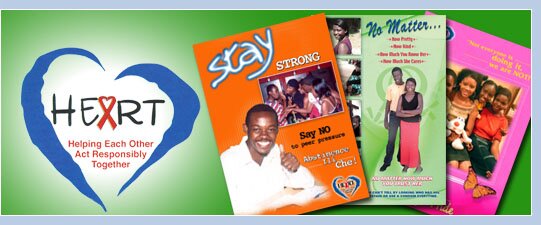 |
HEART CAMPAIGN (Phase 3) MATERIALS - ZAMBIA
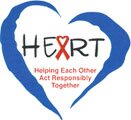 A design team of communication and adolescent reproductive health specialists, including young Zambians, came together in 1998 to plan, develop, and implement the HEART (Helping Each Other Act Responsibly Together) Campaign. Representation from the Network of Zambian People Living with HIV and AIDS on the design team ensured that the concerns of HIV-positive youth were considered. To achieve even broader youth involvement, HEART included a Youth Advisory Group (YAG) consisting of 35 to 40 young people from 11 youth organizations to advise the design team. The YAG developed communication objectives and messages for abstinent males, abstinent females, inconsistent male condom-users and inconsistent female condom-users, all ages 13 to 19 years. Finally, the team tested message concepts for appeal and comprehension through focus groups and in-depth interviews; post-broadcast spot surveys were conducted to test reach and recall. The following concepts were the basis of television spots and print materials used in Phase 3 of this campaign: A design team of communication and adolescent reproductive health specialists, including young Zambians, came together in 1998 to plan, develop, and implement the HEART (Helping Each Other Act Responsibly Together) Campaign. Representation from the Network of Zambian People Living with HIV and AIDS on the design team ensured that the concerns of HIV-positive youth were considered. To achieve even broader youth involvement, HEART included a Youth Advisory Group (YAG) consisting of 35 to 40 young people from 11 youth organizations to advise the design team. The YAG developed communication objectives and messages for abstinent males, abstinent females, inconsistent male condom-users and inconsistent female condom-users, all ages 13 to 19 years. Finally, the team tested message concepts for appeal and comprehension through focus groups and in-depth interviews; post-broadcast spot surveys were conducted to test reach and recall. The following concepts were the basis of television spots and print materials used in Phase 3 of this campaign:
 |
Our boy
This concept promotes the delay of sexual debut and, among sexually active male youth, a return to abstinence and suggests the important role fathers play in supporting their sons to practice abstinence.
|
 Click image to view the TV spot. Be Patient! Click image to view the TV spot. Be Patient!
|
Click image to view a PDF of the poster. 
|
|
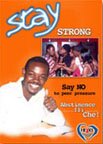 |
 |
No matter how handsome [he is]. . .
This concept dispels the myth that one can tell who has HIV/AIDS simply by looking and informs youth that trust alone is not enough.
|
 Click image to view the TV spot. Click image to view the TV spot.
|
Click image to view a PDF of the poster. 
|
|
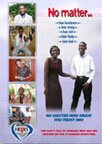 |
 |
Virgin power, virgin pride (Sugar Daddies)
This TV spot shows adolescent girls disparaging sugar daddies.
|
 Click image to view the TV spot. Click image to view the TV spot.
|
Click image to view a PDF of the poster. 
|
|
 |
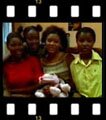 |
Virgin power, virgin pride (Gifts for Sex)
This TV spot depicts adolescent girls who disparage gifts for sex.
|
 Click image to view the TV spot. Click image to view the TV spot.
|
Click image to view a PDF of the poster. 
|
|
 |
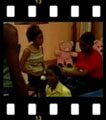 |
Virgin power, virgin pride (Abstinence)
This TV spot features adolescent girls who uphold abstinence.
|
 Click image to view the TV spot. Click image to view the TV spot.
|
Click image to view a PDF of the poster. 
|
|
 |
 |
No matter how pretty [she is]. . .
This concept dispels the myth that one can tell who has HIV/AIDS simply by looking and informs youth that trust alone is not enough.
|
 Click image to view the TV spot. Click image to view the TV spot.
|
Click image to view a PDF of the poster. 
|
|
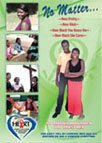 |
 |
Maximum brand
This concept promotes the use of condoms among sexually active youth and reminds youth that trust alone is not enough.
|
 Click image to view the TV spot. Click image to view the TV spot.
|
Click image to view a PDF of the poster. 
|
|
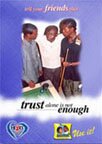 |
 |
4 Cs (clothes, cash, car keys, condoms)
This concept promotes consistent condom use for those who do not abstain by demonstrating that carrying condoms is a “cool” behavior (shows Maximum brand).
|
 Click image to view the TV spot. Click image to view the TV spot.
|
|
|
|
EVIDENCE OF IMPACT
To measure the effects of HEART, the research team used a quasi-experimental, separate sample pre- and follow-up design. They conducted a baseline cross-sectional sample survey in August 2000; the final sample comprised 533 young men and 656 young women. Over a three-week period in August and September 2003 researchers conducted a follow-up cross-sectional sample survey of 618 male and 621 female respondents.
The HEART program largely met its goals. Among the salient findings were the following:
- About 64% of urban 2003 respondents reported that they had seen all or some of the television spots, while approximately 14% of rural respondents saw one or more.
- Viewers were significantly more likely than non-viewers to mention abstinence as a way to avoid transmission in both survey years.
- In 2003, viewers compared with non-viewers were more likely to mention condom use and having only one partner as ways to avoid HIV.
- Approximately 53% of viewers in the 2003 survey reported that they took at least one action as a result of having seen the campaign.
- Overall, respondents were more likely to say they chose “to abstain” than to report that they decided to use a condom as a result of seeing the spots in both survey years.
- Viewers were significantly more likely than non-viewers to report primary or secondary abstinence. Holding background variables constant, the odds that respondents were abstinent was 1.4 times greater for viewers compared with non-viewers in 2000 and 1.7 times greater in 2003.
CREDITS
The Government of the Republic of Zambia (GRZ) asked the U.S. Agency for International Development (USAID) and its implementing partner, the Zambia Integrated Health Programme (ZIHP), to work with young people to address the HIV/AIDS problem, with the support and guidance of the Central Board of Health (CBOH), the National AIDS Council and Secretariat (NAC), and other nongovernmental organizations. With USAID support, Johns Hopkins Bloomberg School of Public Health/Center for Communication Programs (CCP) and Population Services International (PSI) helped implement HEART.
 See resources for HIV/AIDS Treatment Communication See resources for HIV/AIDS Treatment Communication
Back to M/MC Home
|



